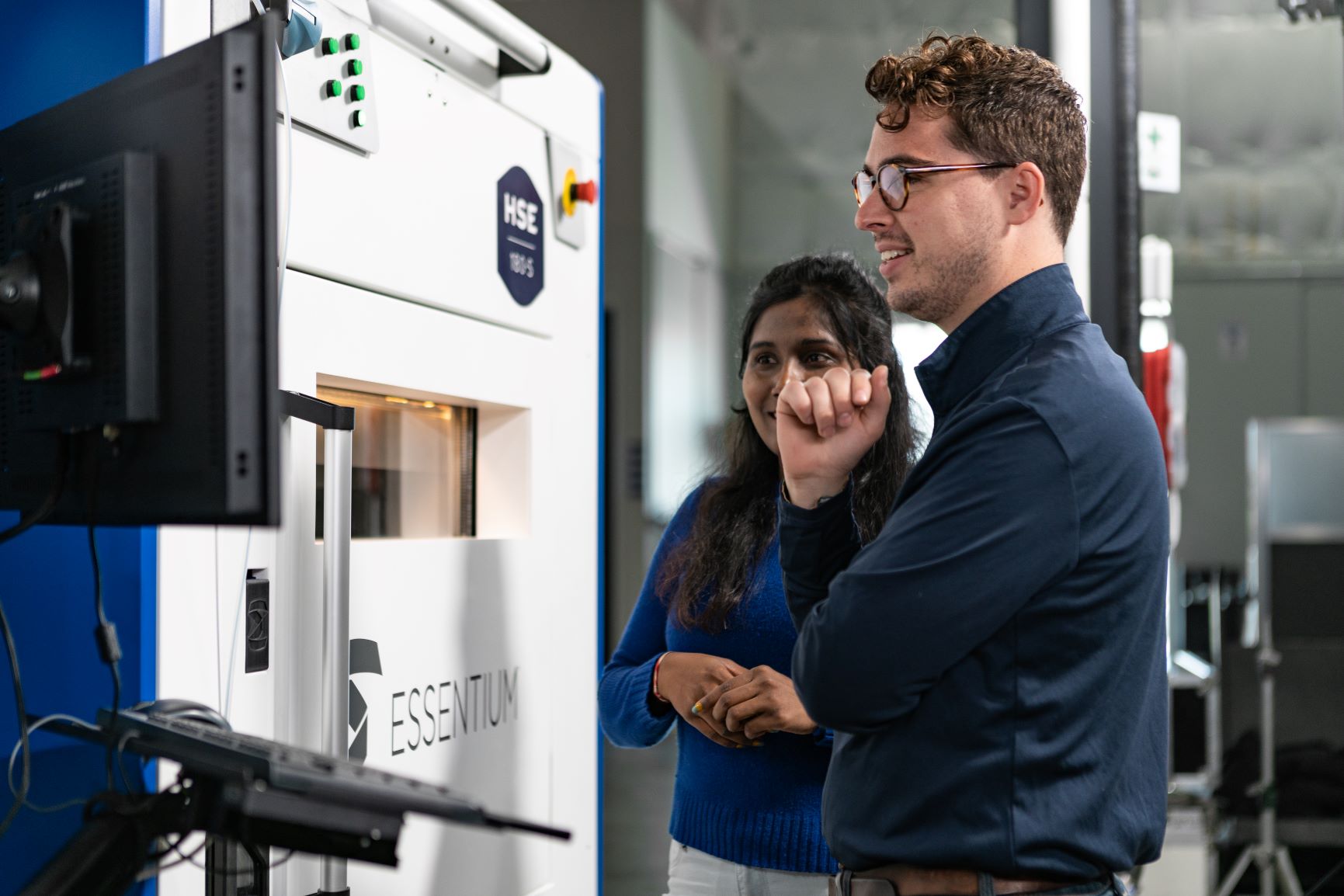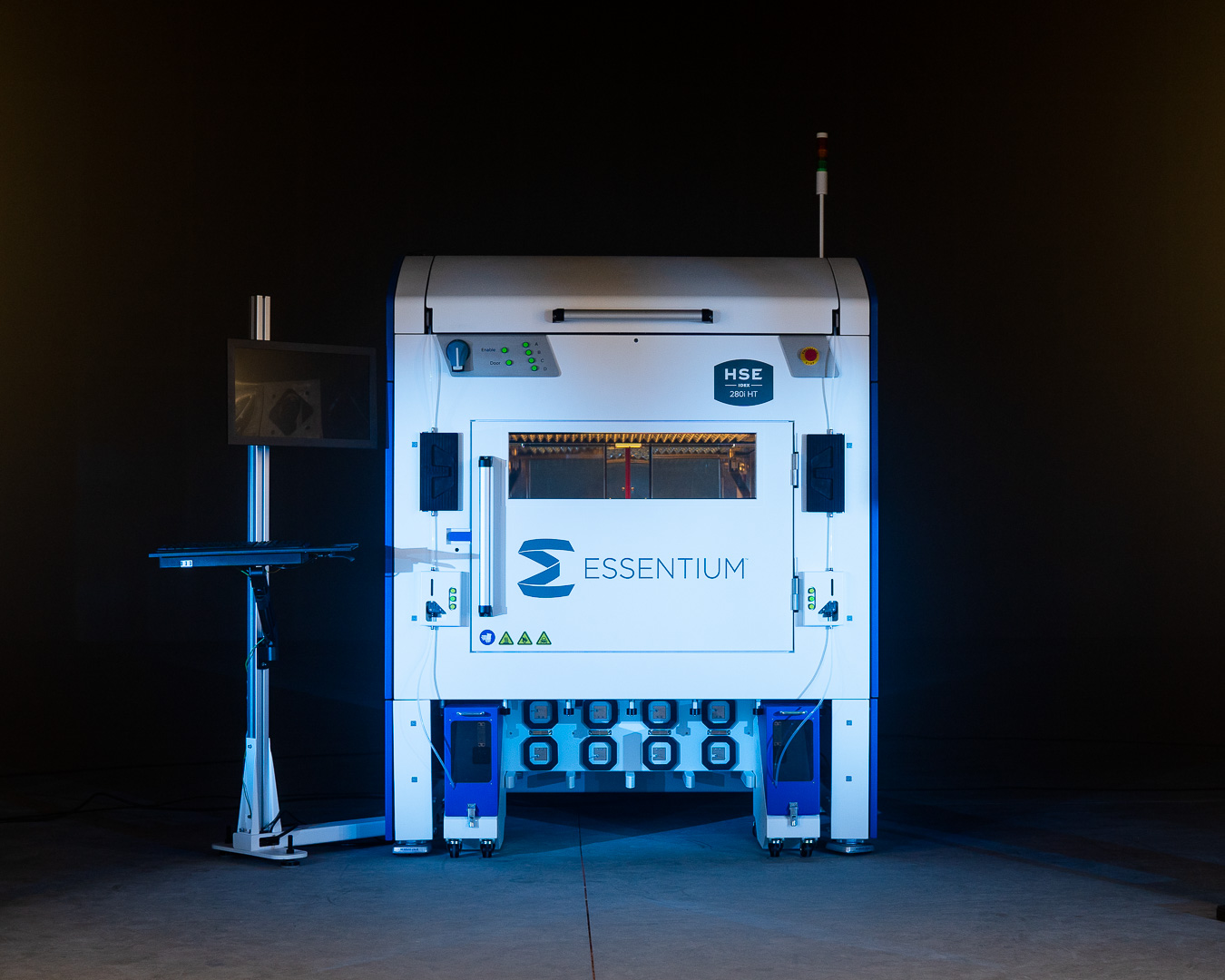Essentium, the manufacturer behind the High Speed Extrusion (HSE) 3D printer series, has deployed its technology to deliver significant cost and time benefits to electronics manufacturer VIRTEX.
Typically, VIRTEX produces custom fixtures for circuit boards and electronics placed in plastic enclosures via traditional manufacturing methods, however such techniques would have proved unsustainable as the firm sought to scale up production of the components. To overcome these limitations, the firm turned to Essentium to produce the fixtures using its HSE 3D printing technology.
Working with Essentium, VIRTEX was reportedly able to reduce the cost of producing the fixtures by 99 percent and lower the lead time of the components by almost two weeks.
“The flexibility of additive manufacturing was one of the biggest benefits for us,” said Ian Denefe, Manufacturing Engineer at VIRTEX. “The fact that we could reverse engineer existing fixtures, print them quickly, and rapidly modify them or replace them made it an ideal solution.”

Essentium’s HSE technology
Essentium first launched its HSE platform in 2018 with the aim of addressing both the speed and strength drawbacks of traditional FDM/FFF 3D printers.
The following year, the company began scaling the production of the platform and expanded on its existing relationships with key industry players such as chemical firm BASF and software developer Materialise. The three companies have since worked together to advance high-speed additive manufacturing and introduce an open-model for the technology.
Over the past couple of years, Essentium has introduced several new high-temperature filaments for its HSE platform, including three new composite filaments suited to aerospace, defense, and electronics applications, and most recently its new high-performance PEKK 3D printing filament.
Essentium launched its independent dual extrusion (IDEX) FFF 3D printing system, the HSE 280i HT, in March to enable manufacturers in the aerospace, automotive, and electronics sectors to produce high-volume functional prototypes and production parts. Soon after, the company announced a partnership with Wichita State University’s National Institute for Aviation Research (NIAR) to leverage its HSE 3D printing platform to produce tooling, spare parts, and eventually flight-worthy aircraft parts for the aerospace industry.
In July, Essentium announced plans to enter the resin-based DLP 3D printing market with the acquisition of Collider, the developer of the ‘Programmable Tooling’ hybrid additive manufacturing process. The acquisition will continue to strengthen the firm’s offering to the automotive, aerospace, medical, and manufacturing industries, and the company’s growth has also been shown in the expansion of its team, having doubled its global headcount year-on-year.

Accelerating pace of electronics manufacturing
Through its latest partnership with VIRTEX, Essentium has further proven the capabilities of its HSE 3D printing technology for the electronics sector.
VIRTEX manufactures electronics components for customers across the aerospace, military, medical, and other industrial sectors, and needed to find a technology capable of meeting the demand for 3,000 custom fixtures per month. Achieving this figure with the firm’s current conventional manufacturing techniques was deemed unsustainable due to the large lead times and costs accrued as production scaled.
To find a more cost-effective, agile way of producing the fixtures, VIRTEX turned to Essentium to leverage its HSE 3D printing technology. The companies worked together to design and produce custom fixtures capable of performing as well as their machined counterparts, but with improved cost-savings and time-to-market gains.
Essentium’s HSE 3D printing platform and the firm’s PCTG material were chosen for the task, due to the need for a build volume able to accommodate 18” x 6” parts. Leveraging the technology, VIRTEX was able to print the set of custom fixtures in less than two days and reduce the lead time of the parts by almost two weeks.
For the same fixture order costing $5,000, the 3D printed alternative was just $30, reportedly reducing the manufacturing cost by 99 percent.
“As additive manufacturing goes mainstream, it is increasingly possible to manufacture crucial parts at speed and scale not previously seen,” said Blake Teipel, CEO of Essentium. “Given its greater design freedom, accelerated time to market, and significantly lower tooling costs, AM is fast becoming one of the most effective ways to meet the demands of electronics manufacturers.
“We will continue to work with customers like VIRTEX to unlock innovative new possibilities in electronics design and production.”
Subscribe to the 3D Printing Industry newsletter for the latest news in additive manufacturing. You can also stay connected by following us on Twitter and liking us on Facebook.
Looking for a career in additive manufacturing? Visit 3D Printing Jobs for a selection of roles in the industry.
Subscribe to our YouTube channel for the latest 3D printing video shorts, reviews and webinar replays.
Featured image shows Essentium’s HSE 3D printing platform. Photo via Essentium.



